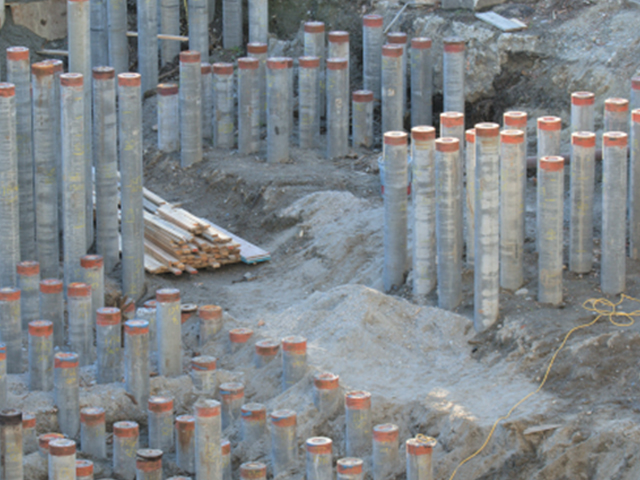
Why Use a Group of Piles Instead of a Single Pile in Foundations: An In-Depth Look
1 June 2024Table of Contents
Why Use a Group of Piles Instead of a Single Pile in Foundations: An In-Depth Look
When it comes to constructing robust and reliable foundations for large structures, the decision to use a group of piles instead of a single pile is crucial. Pile foundations are essential in transferring loads from buildings to the ground, especially in areas with weak or unstable soil. This article explores the reasons behind using a group of piles over a single pile, highlighting the advantages and technical considerations that make this approach superior for many construction projects.
Understanding Pile Foundations
Pile foundations consist of long, slender columns made of materials such as concrete, steel, or timber, driven deep into the ground to reach stable soil or rock layers. They are used to support structures with heavy loads or in areas where the surface soil is not strong enough to bear the load on its own.
Advantages of Using a Group of Piles
1. Load Distribution
One of the primary reasons for using a group of piles is the effective distribution of loads. A single pile might not be able to bear the entire weight of a structure, especially if the load is substantial. By using multiple piles, the load is spread across a larger area, reducing the stress on each individual pile and enhancing the overall stability of the foundation.
2. Increased Load Capacity
A group of piles can collectively support much heavier loads than a single pile. This is particularly important for large buildings, bridges, and other structures that exert significant pressure on their foundations. The combined strength of a pile group ensures that the foundation can handle the load without risk of failure.
3. Mitigation of Settlement Issues
Settlement occurs when the ground beneath a foundation compresses under the weight of the structure, potentially leading to uneven or excessive sinking. A group of piles minimizes settlement by distributing the load more evenly and reaching deeper, more stable soil layers. This reduces the likelihood of differential settlement, which can cause structural damage over time.
4. Improved Stability in Lateral Loads
Structures often face lateral loads due to wind, earthquakes, or other forces. A group of piles provides better resistance to these lateral forces compared to a single pile. The collective action of multiple piles enhances the foundation’s ability to withstand horizontal movements, ensuring the structure remains stable and secure.
5. Redundancy and Safety
Using multiple piles introduces redundancy into the foundation design. If one pile fails, the load can be redistributed among the remaining piles, reducing the risk of catastrophic failure. This redundancy is a crucial safety feature, especially for critical infrastructure and high-rise buildings.
Technical Considerations
When designing a group of piles, several technical factors must be considered to ensure optimal performance:
- Pile Spacing: Proper spacing between piles is essential to prevent negative interactions such as pile-to-pile load transfer and ensure that each pile can carry its share of the load.
- Pile Cap Design: A pile cap is a thick concrete mat that sits on top of the pile group, distributing the load from the structure above to the piles below. The design of the pile cap must accommodate the load distribution and ensure stability.
- Soil-Pile Interaction: The interaction between the piles and the surrounding soil plays a critical role in the foundation’s performance. Soil testing and analysis are necessary to determine the appropriate pile length and diameter.
- Construction Techniques: The method used to install the piles, such as driven piles or drilled shafts, affects the foundation’s effectiveness. Each technique has its advantages and limitations based on the soil conditions and load requirements.
Conclusion
Using a group of piles instead of a single pile in foundation construction offers numerous benefits, including better load distribution, increased load capacity, reduced settlement, enhanced stability against lateral loads, and added redundancy for safety. These advantages make pile groups an essential component in the design and construction of durable, reliable foundations for various structures. By considering technical factors such as pile spacing, pile cap design, soil-pile interaction, and construction techniques, engineers can optimize the performance of pile group foundations and ensure the longevity and stability of the structures they support.
For more insights on foundation engineering and construction techniques, stay tuned to our blog, where we delve into the latest advancements and best practices in the industry.
If you need a spreadsheet for Pile Group calculation please follow this link
Pile Group Analysis For Rigid Pile Cap Spreadsheet


